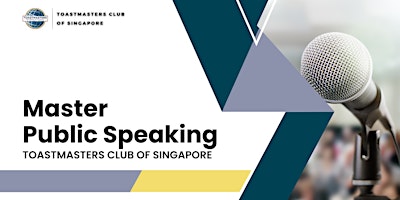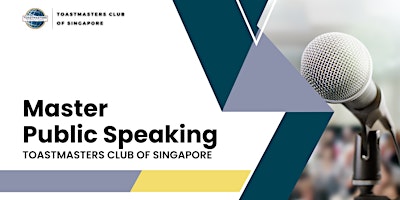Have you heard this maxim – laughter is the best medicine? Everybody loves to laugh but, not everybody can make others laugh. It’s because telling jokes or funny stories is not easy and it takes special skill to render this part of the speech.
Researchers have found that having fun and laughter is good for your health. Norman Cousin, the author of the book: “Anatomy of an illness” confirmed that laughing has a remedial effect on illness. He was suffering from a terminal illness and he turned to humour and laughter such as watching cartoons and shows like “ The Three Stooges Shows” and “the Lucy Shows.”
It was the laughter that nursed him back to health. His doctor found laughter reduced the inflammation and infection in his body.
Since then there are reports that many terminally ill patients turned to laughter such as cartoons and comedies to get them better. Humour bridges and builds rapport with the audience instantly.
It is not easy but not impossible to inject humour into your speech. Many speakers avoid humour in their speeches because humour can sound like a faux pas when delivered by them.
Great values in using humour in speeches
- It connects you immediately to the audience. The audience loves humour and enjoys great laughter. If you can make it laugh, it will like you more.
- It eases your approach to sensitive subjects. The strategy is to make the audience your ally. When you touch on sensitive subjects, it would not be so sensitive any more. In a way, you have desensitized it.
- Humour is a quick way to disarm a hostile audience. If you can make it laugh, then it would not be hostile.
- People remember a humourous story than a simple story.
- Humour motivates the audience and it will want more.
- At the end of the day, the audience remembers you because of the joke and your illustrations are more memorable.
Frequently Asked Questions About Humour
- What is humour?
- Why do people laugh?
- How do we use humour?
- Who are the best targets?
- How to create humour?
- When to use humour?
- What happens if there is no laughter?
- Where can you find humour?
What is Humour?
If you ask ten people “What is humour?” Most probably, you would receive ten different answers.
Some of the answers are:
“Humour is exaggeration or surprise.” – Mark Mayfield.
“Rebellion against the status quo creates humour.” – Grady Jim Robinson
“A humour is the ability to see absurdity in our greatest fears.” – George Valliant.
“Humour helps us to shift perspective on our lives. It is a creative alternative to coping with stress.” – Lorrie Bard
“Humour is an art. As with any other art, the increasing awareness of humour enables you to appreciate it more. It also improves your skills and talents.” – Roger Bates
“Humour is emotional chaos remembered in tranquility.” – James Thurber.
“Humour is laughing at what you haven’t got when you ought to have one.” – Langston Hughes.
“Humour is affirmation of dignity, a declaration of man’s superiority to all that befalls him.” – Ramon Gary.
And here are my versions of explaining what is humour:
- “Humour is a serious thing that becomes funny.”
- “Humour is better if it is unprepared and impromptu.”
- “An effective humour has no cultural barriers.”
- “Humour has magic if it explodes at the right time.”
The Common Forms of Verbal Humour
An Anecdote is a short account of a true or not-so-true account of an interesting and entertaining incident.
A Riddle is a puzzling question or statement that needs to be solved.
A One-Liner is a single brief incident, a comic tale that creates laughter.
A Joke is a single brief incident, a comic tale that creates laughter.
A Story or a humourous story is a longer version of joke. It has a beginning, body and ending.
Why Do We Laugh?
Much research has been done to determine the reasons behind the laugh.
The following are some of the reasons why people laugh.
1. Surprise
Remember the occasion when you were caught in a situation when someone surprised you with something, such as a birthday party. You started roaring with laughter because you did not expect it to happen. In a story, a surprise ending will bring laughter to the listeners. The listeners are unaware of the unexpected ending. The speaker has to use witty words to build up the story and end with a punch (the punch line) that triggers the laughter.
2. Superiority
Human being like to be treated as superior and even though we are not superior; we like to feel superior. In jokes we like to play on the superiors, the authority, the rich and famous and the stronger ones (like the politicians.) As we cannot beat them on level terms, at least, we can joke about them. Sometimes, the jokes can lead to witty insult.humour can be social criticism, and inAmerica, there are blatant thrusts at the ethnic minority. The object is to deflate. According to a famous comedian, Melvin Helitzer, “As individuals, our humour is generally directed upwards against authoritative figures. In a group setting, our humour is directed downward towards groups that don’t conform to our social, religious or national norm.”
3. Incongruity
People laugh at incongruity because of its absurdity . For example, a company Chairman delivered his new year’s address thus: “I wish everyone of you to have a New Year resolution like this – I shall support the company’s policy of restructuring and agree to leave the company peacefully.”
For instance, an experienced speaker was asked to say a few words at a company diner. He got up and said, “Ladies and gentlemen, good evening to you. I am happy to be here to say a few words. I have done it and now I shall shut up.”
4. Ambivalence
This is similar to incongruity except that ambivalence stresses conflicting emotions whereas incongruity stresses clashing ideas and perceptions. For example, Bill Crosby to his troublesome son: “Listen, son, I am telling you, damn it. I brought you into this world, and I can take you out of it.”
In Part 2 of “Humour – Tips to Injecting It Into Your Speech, I shall tell you more about how to use humour and how to develop humour for your speech. Until then… 🙂
Want to learn the proper techniques of public speaking, the tricks and tips to easily changing your style of delivery according to the times and needs of your listeners?
Every speaker is different, so is your audience. Great public speakers not only know how to tell wonderful and convincing stories, they are also great artist in painting images into the hearts of their listeners. And they precisely know how to adjust their speaking styles to suit their audience from different cultures and nations.
In his book, Earnestly Speaking, Ernest will show you how you can hone your public speaking skills to aid your progress in both your professional and personal life.
Earnestly Speaking is the child of Singapore’s best public speaking coach, Ernest Chen. In his book of twenty independent chapters, Ernest will hold you by your hand and walk you through the six different aspects of public speaking -ranging from preparing your speech, deciding on the most appropriate type of speech to deliver to your audience to the different modes of communication and more….
To start your dream of becoming a persuasive and entertaining public speaking without having butterflies in your stomach, visit your local bookstore and get Ernest’s public speaking bestseller, Earnestly Speaking today!








